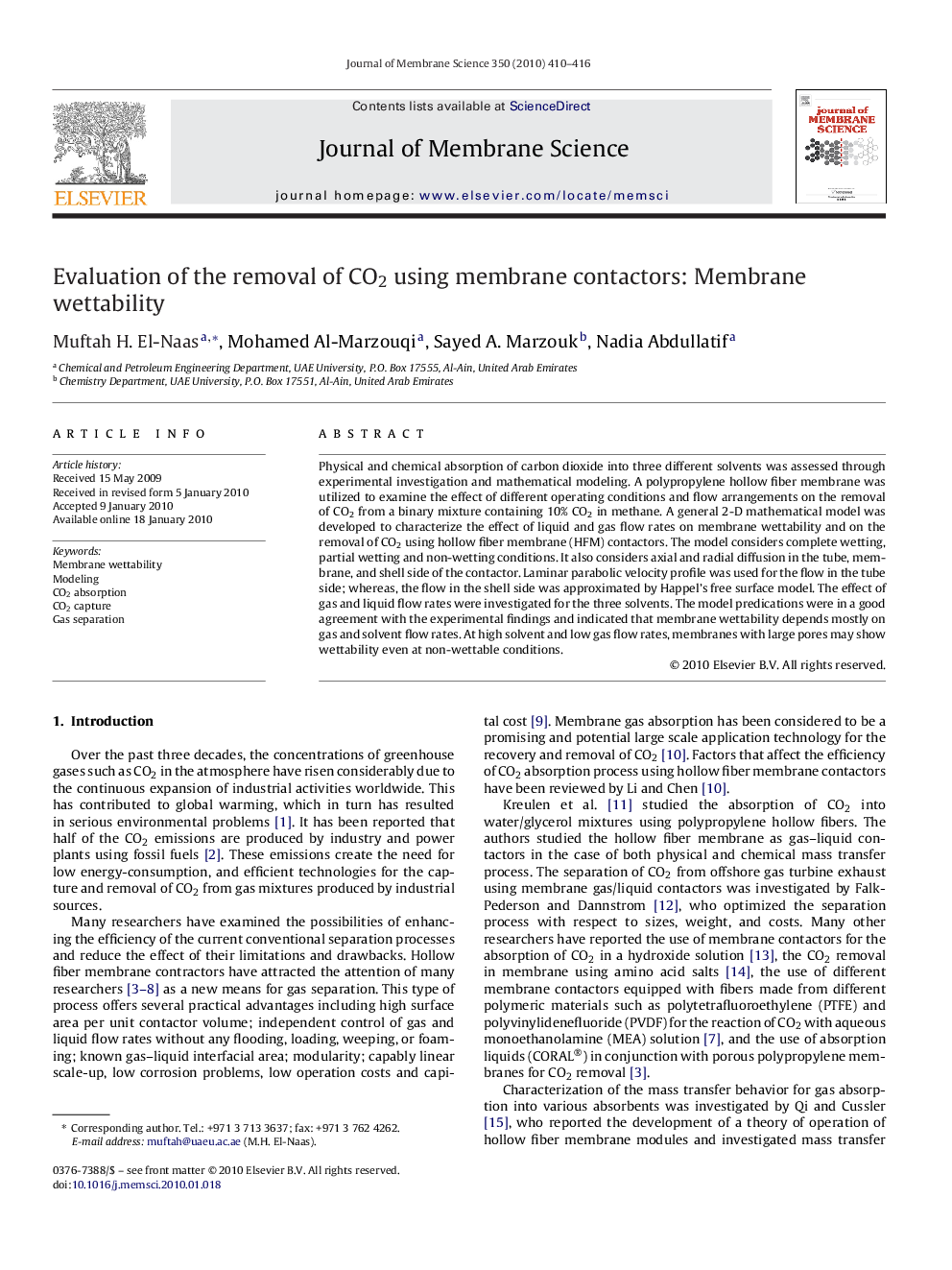| Article ID | Journal | Published Year | Pages | File Type |
|---|---|---|---|---|
| 636447 | Journal of Membrane Science | 2010 | 7 Pages |
Physical and chemical absorption of carbon dioxide into three different solvents was assessed through experimental investigation and mathematical modeling. A polypropylene hollow fiber membrane was utilized to examine the effect of different operating conditions and flow arrangements on the removal of CO2 from a binary mixture containing 10% CO2 in methane. A general 2-D mathematical model was developed to characterize the effect of liquid and gas flow rates on membrane wettability and on the removal of CO2 using hollow fiber membrane (HFM) contactors. The model considers complete wetting, partial wetting and non-wetting conditions. It also considers axial and radial diffusion in the tube, membrane, and shell side of the contactor. Laminar parabolic velocity profile was used for the flow in the tube side; whereas, the flow in the shell side was approximated by Happel's free surface model. The effect of gas and liquid flow rates were investigated for the three solvents. The model predications were in a good agreement with the experimental findings and indicated that membrane wettability depends mostly on gas and solvent flow rates. At high solvent and low gas flow rates, membranes with large pores may show wettability even at non-wettable conditions.
